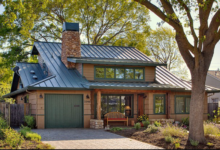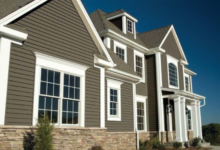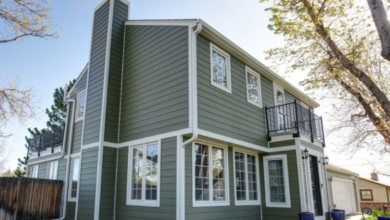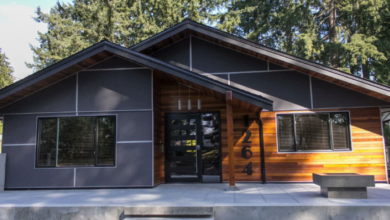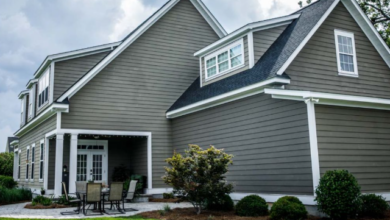How to Finance Home Siding | Affordable Solutions
How to Finance Home Siding – Discover various financing options for home siding projects, including personal loans, home equity lines of credit, and specialized financing programs. Learn how to choose the best option for your needs and budget.
Financing Your Home Siding Project: Affordable Solutions for Every Homeowner

Upgrading your home’s siding is a significant investment that enhances curb appeal, increases energy efficiency, and boosts property value. However, the cost can be substantial, leading many homeowners to explore financing options. In this comprehensive guide, we’ll delve into various financing methods, their benefits, and how to choose the best option for your home siding project.
Understanding the Importance of Home Siding
Home siding serves as a protective barrier against the elements, insulates your home, and contributes to its overall aesthetic appeal. Quality siding can:
- Enhance Curb Appeal: Fresh, well-maintained siding gives your home a polished look, increasing its attractiveness to potential buyers.
- Improve Energy Efficiency: Modern siding materials offer better insulation, reducing energy bills by maintaining consistent indoor temperatures.
- Increase Property Value: Upgraded siding can boost your home’s market value, making it a worthwhile investment.
Common Financing Options for Home Siding Projects
When it comes to financing your siding project, several options are available:
- Personal Loans: Unsecured loans that don’t require collateral. They offer fixed interest rates and predictable monthly payments.
- Home Equity Loans (HEL): Secured loans using your home as collateral, providing a lump sum with fixed interest rates.
- Home Equity Lines of Credit (HELOC): Similar to HEL but function like a credit card, allowing you to draw funds as needed.
- Contractor Financing: Many siding contractors offer in-house financing or partner with financial institutions to provide payment plans.
- Credit Cards: For smaller projects, using a credit card might be convenient, especially if it offers promotional interest rates.
Detailed Overview of Financing Products
Let’s explore some reputable financing products suitable for home siding projects:
1. LightStream Personal Loans
LightStream Personal Loans offer unsecured loans with competitive interest rates and flexible terms.
Features:
- Loan amounts: $5,000 to $100,000
- APR: 3.99% to 16.99% with AutoPay
- Terms: 24 to 144 months
- No fees or prepayment penalties
Pros:
- Quick approval process
- Funds available as soon as the same day
- No collateral required
Cons:
- Requires good to excellent credit
- Not available for all home improvement projects
Use Case: Ideal for homeowners with strong credit seeking a straightforward loan without using home equity.
2. Discover Home Equity Loans
Discover Home Equity Loans provide fixed-rate loans using your home as collateral.
Features:
- Loan amounts: $35,000 to $200,000
- APR: Starting at 3.99%
- Terms: 10, 15, 20, or 30 years
- No application or origination fees
Pros:
- Fixed monthly payments
- Potential tax-deductible interest
- High loan amounts available
Cons:
- Longer approval process
- Requires sufficient home equity
- Home is used as collateral
Use Case: Suitable for homeowners with significant equity looking for large loan amounts and fixed payments.
3. Wells Fargo Home Improvement Loans
Wells Fargo offers unsecured personal loans specifically for home improvement projects.
Features:
- Loan amounts: $3,000 to $100,000
- APR: Varies based on creditworthiness
- Terms: 12 to 84 months
- No collateral required
Pros:
- Fast decision and funding
- No prepayment penalties
- Flexible loan amounts
Cons:
- Interest rates may be higher than secured loans
- Requires good credit history
Use Case: Best for homeowners seeking quick funding without using home equity.
4. GreenSky Credit Program
GreenSky partners with contractors to offer financing solutions for home improvement projects.
Features:
- Loan amounts: Up to $65,000
- APR: Promotional rates available
- Terms: Up to 12 years
- Deferred interest plans
Pros:
- Quick and easy application process
- Promotional financing options
- Works directly with contractors
Cons:
- Limited to participating contractors
- Deferred interest can be costly if not paid within the promotional period
Use Case: Ideal for homeowners working with participating contractors seeking promotional financing.
5. Home Depot Project Loan
Home Depot offers project loans for home improvement purchases made at their stores.
Features:
- Loan amounts: Up to $55,000
- APR: Fixed 7.99%
- Terms: 66 to 114 months
- Six-month purchasing window
Pros:
- Extended purchasing period
- Fixed interest rate
- No annual fees
Cons:
- Can only be used at Home Depot
- Interest rates may be higher than other options
Use Case: Best for homeowners planning to purchase materials directly from Home Depot.
Comparison Table of Financing Options

| Financing Option | Loan Amount | APR Range | Terms | Pros | Cons |
|---|---|---|---|---|---|
| LightStream Personal Loans | $5,000 to $100,000 | 3.99% to 16.99% | 24 to 144 months | No collateral, quick funding | Requires excellent credit |
| Discover Home Equity Loans | $35,000 to $200,000 | Starting at 3.99% | 10 to 30 years | Fixed payments, potential tax benefits | Home as collateral, longer approval |
| Wells Fargo Home Improvement Loans | $3,000 to $100,000 | Varies | 12 to 84 months | No collateral, fast funding | Higher rates, requires good credit |
| GreenSky Credit Program | Up to $65,000 | Promotional rates | Up to 12 years | Quick application, works with contractors | Limited to participating contractors |
| Home Depot Project Loan | Up to $55,000 | Fixed 7.99% | 66 to 114 months | Extended purchasing period | Only for Home Depot purchases |
Benefits of Financing Your Home Siding Project
Financing your siding project offers several advantages:
- Immediate Home Improvement: Access funds to start your project without waiting to save up.
- Flexible Payment Options: Choose a financing plan that fits your budget and timeline.
- Preserve Savings: Keep your emergency funds intact by spreading the cost over time.
- Potential Tax Benefits: Some loans offer tax-deductible interest payments (consult a tax advisor).
How to Choose the Right Financing Option
Choosing the right financing option for your home improvement project, or any significant purchase, requires careful consideration of your financial situation and goals. Here’s a step-by-step guide to help you make an informed decision:
1. Assess Your Financial Situation:
- Credit Score:
- Your credit score is a crucial factor in determining the interest rates and loan terms you’ll qualify for.
- Obtain a copy of your credit report and review it for any errors.
- Income and Expenses:
- Evaluate your monthly income and expenses to determine how much you can afford to pay back each month.
- Create a budget to track your spending and identify areas where you can cut back.
- Existing Debt:
- Consider your existing debt load, including credit card balances, student loans, and other outstanding debts.
- A high debt-to-income ratio may limit your financing options.
- Savings:
- Determine how much you have in savings and whether you want to use those funds for your project.
- Consider the opportunity cost of using your savings versus borrowing.
2. Determine Your Financing Needs:
- Project Cost:
- Obtain accurate estimates for your project to determine the total amount you need to borrow.
- Loan Term:
- Decide on the loan term that best fits your budget and repayment goals.
- Shorter loan terms typically have lower interest rates but higher monthly payments.
- Interest Rate:
- Compare interest rates from different lenders to find the most favorable terms.
- Consider whether you prefer a fixed or variable interest rate.
3. Explore Financing Options:
- Personal Loans:
- Unsecured loans that can be used for various purposes.
- Interest rates and loan terms vary based on your credit score.
- Home Equity Loans/Lines of Credit (HELOCs):
- Secured loans that use your home as collateral.
- Typically offer lower interest rates but require homeownership.
- Credit Cards:
- Convenient for small projects or purchases.
- Can have high interest rates if not paid off quickly.
- Contractor Financing:
- Offered by some contractors through partnerships with financial institutions.
- May include special promotions or deferred payment options.
- Government-Backed Loans:
- Some government programs offer loans or grants for energy-efficient home improvements.
- Check with your local government or energy agency for available programs.
- Online Lenders:
- Offers a wide variety of loan types.
- Many lenders offer a pre-qualification process.
4. Compare and Evaluate:
- Interest Rates and Fees:
- Compare the annual percentage rate (APR), which includes interest rates and fees.
- Pay attention to any origination fees, closing costs, or prepayment penalties.
- Repayment Terms:
- Evaluate the monthly payment amount and the total cost of the loan over its lifetime.
- Consider whether you can afford the monthly payments comfortably.
- Lender Reputation:
- Research the lender’s reputation and customer reviews.
- Ensure the lender is reputable and has a good track record.
- Loan Flexibility:
- Consider if there are any options for early repayments, or if any other flexible options are available.
5. Make Your Decision:
- Choose the Best Option:
- Select the financing option that best meets your needs and budget.
- Consider the long-term costs and benefits of each option.
- Read the Fine Print:
- Carefully review the loan agreement before signing.
- Ensure you understand all the terms and conditions.
- Secure Financing:
- Follow the lenders instructions to secure your financing.
Key Considerations:
- Long-Term Costs:
- Focus not only on the monthly payment but also on the total cost of the loan over its lifetime.
- Flexibility:
- Consider whether the loan offers any flexibility in terms of repayment or early payoff.
- Reputation:
- Choose a reputable lender with a good track record.
By following these steps, you can make an informed decision and choose the right financing option for your needs.



